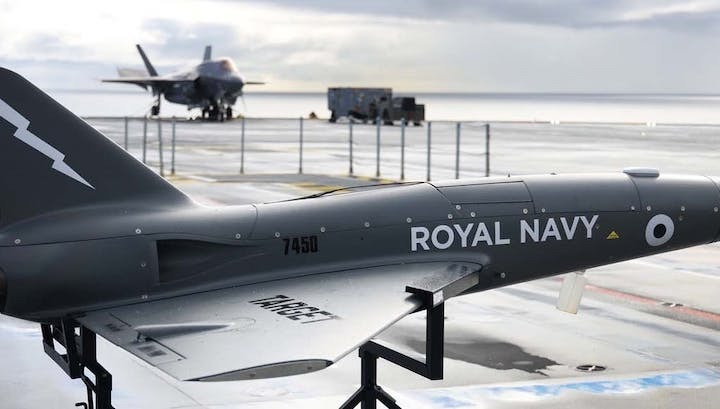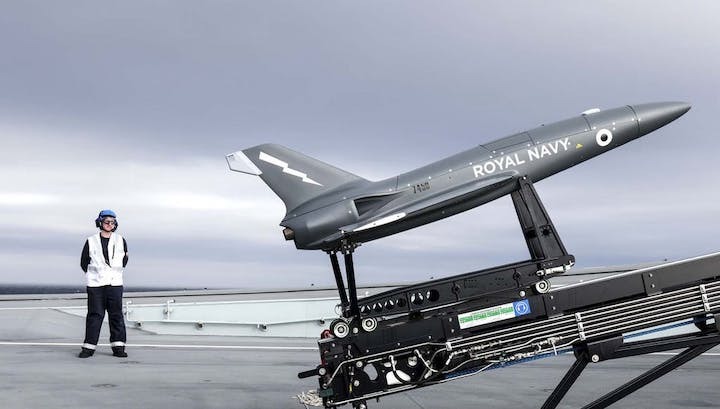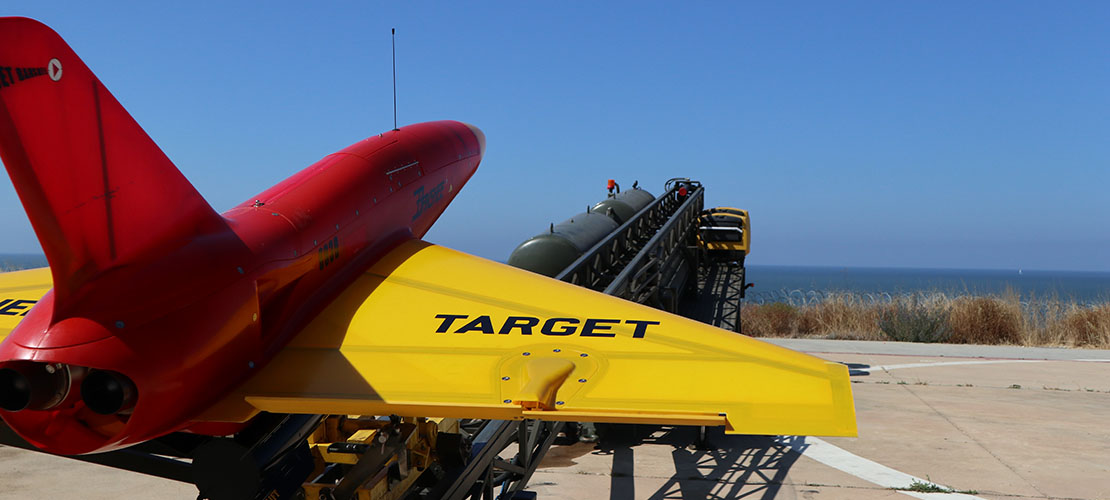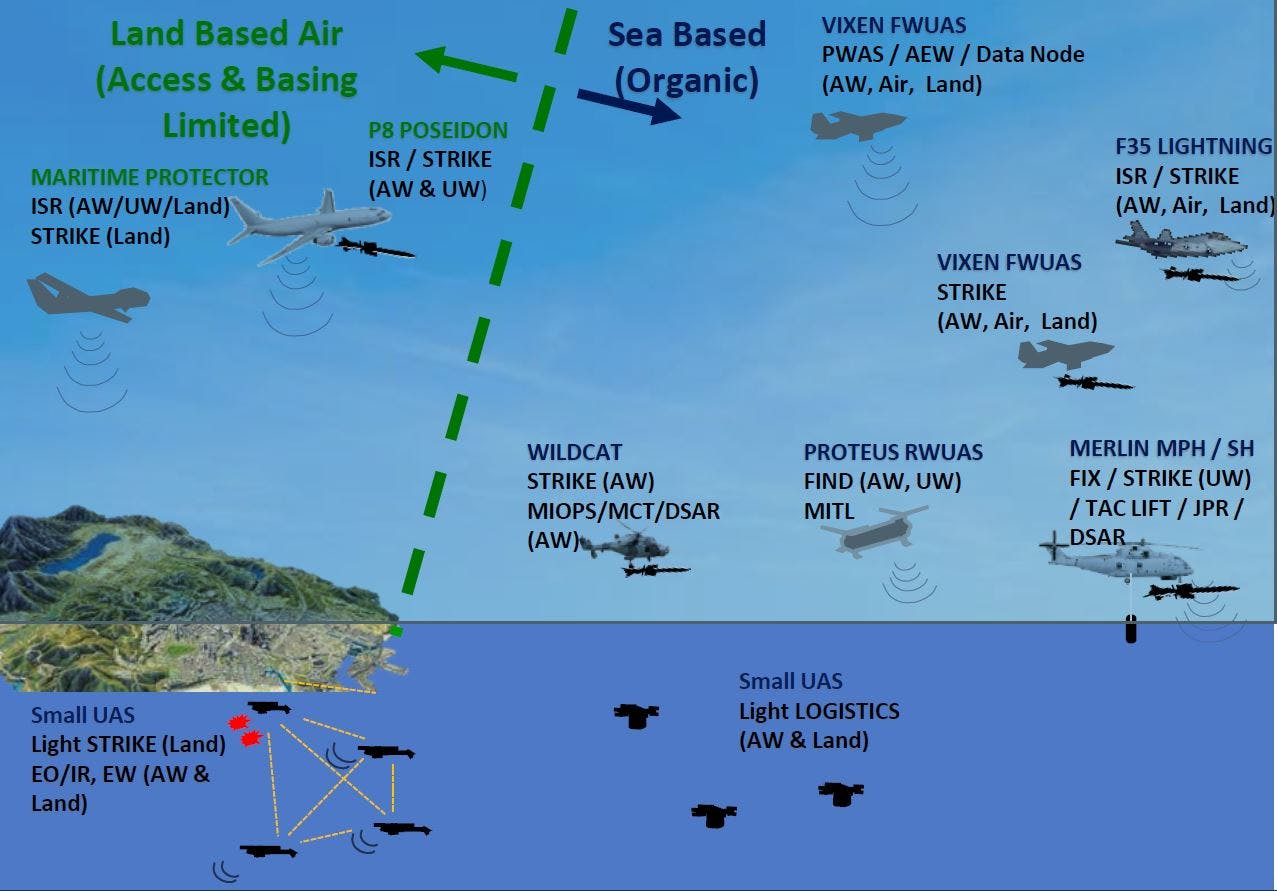5.02.2022

The Royal Navy is moving forward with ‘Project Vampire’, a plan to procure low-cost fixed-wing drones for intelligence, surveillance and reconnaissance in addition to electromagnetic operations and threat simulation.
According to the contract tender notice, the outline of the project is as follows.
“Project VAMPIRE sits within the Develop Directorate of Navy Command and aims to address a number of capability problem sets utilising a low-cost Fixed Wing Uncrewed Air Vehicle (UAV) as a means for the development of operational concepts, payload types, and associated communication and digital architecture.”
According to the contract tender notice, Phase 1 of project Vampire will run as a 4 year project with an option to extend by 1 year until 31 March 2026.
The project is being contracted to deliver the following:
- Four Air Vehicles (In Royal Navy livery as agreed with the authority), with one additional per year in 2023-24 and 2024-25, with options to purchase up to 10 more and an option to extend the contract until 31/03/2026.
- One Launcher with options to purchase up to 2 more.
- One ground control station and aerials, with options to purchase up to 2 more.
- Training for operators in 2022-23, with a repeat in 2024-25.
- Maintainer training for first-line servicing in 2022-23, with a repeat in 2024-25.
Key Specifications
- Max operating altitude more than 35,000ft AMSL
- Sea Skimming operations Min operating altitude below 50ft ASL
- Min operating altitude below 20ft ASL
- Operating speeds Speed more than 250m/s
- Manoeuvrability up to 9G
- Low observability Desirable for IR, and NATO frequency bands C – K
- Payloads including tracked, guided, or fused weapon systems
- Flares, IR, and Chaff dispenser
- Payload bay capabilities between 25Kg and 100kg
- Endurance with a full payload of 1 hour.
- Suitability for maritime environments (salt ingress, deck mobility)
- Air Vehicle to be equipped with IFF (modes 3/A and C) and ADS-B.
- Remotely piloted option.
- The air vehicles shall have an agreed paint colour scheme (DAP 119A-0601-08) and display Royal Navy and UK national markings and serial numbering.
This follows the demonstration of drones onboard HMS Prince of Wales last year. HMS Prince of Wales has launched jet powered drones from her flight deck as the Royal Navy started to explore the use of crewless technology on the Queen Elizabeth-class aircraft carriers. It is understood that the demonstration with HMS Prince of Wales looked at how the drone and associated support equipment, including launcher, can be integrated within a busy ship and flight deck.
Banshee drones were launched from the ship and recovered to land via parachute.
“Fixed-wing drones – called the QinetiQ Banshee Jet 80+ – flew from the carrier’s vast flight deck to assess how they might be used to train personnel in defending against ever-more-capable fast jets and missiles. The jet-powered Banshee, which looks like a mini fighter aircraft, can soar to 25,000ft, skim just above the waves, and flies at speeds up to 400 knots (around 460mph). It is hard to detect on radar, giving it all the likeness of an incoming missile – making it a realistic adversary for sailors to train in countering aerial threats.
These drones could eventually be carried by Royal Navy warships and provide operational training to task groups wherever they might be in the world, allowing them to conduct air defence exercises on demand to test reactions and hone responses. And the Banshee’s carrying capacity means the Royal Navy can use it for testing future sensors, weaponry and radio equipment.”
Drones on the carriers?
Alongside the above, carrier-based drones under ‘Project Vixen’ are also being considered for a range of missions including combat, aerial refuelling and airborne early warning but what could they look like?
According to an official Royal Navy publication, titled Future Maritime Aviation Force, which was originally published in December 2020, the Royal Navy aims to replace its helicopter-based airborne early warning (AEW) platform, the Merlin HM2 Crowsnest, with a fixed-wing UAV, currently known as Vixen, by 2030.
The Royal Navy also expects to utilise Vixen in surveillance, air-to-air refueling, electronic warfare and strike roles. A slide from the publication shows that Vixen could be used for airborne early warning, strike, aerial refuelling and more.
Quelle: ukdj
+++
British aircraft carrier launches jet powered drones

HMS Prince of Wales has launched jet powered drones from her flight deck as the Royal Navy begins exploring the use of crewless technology on the Queen Elizabeth-class aircraft carriers.
It is understood that the demonstration with HMS Prince of Wales looked at how the drone and associated support equipment, including launcher, can be integrated within a busy ship and flight deck.

The Banshee launched from the ship and recovered to land via parachute.
According to a news release here:
“Fixed-wing drones – called the QinetiQ Banshee Jet 80+ – flew from the carrier’s vast flight deck to assess how they might be used to train personnel in defending against ever-more-capable fast jets and missiles. The jet-powered Banshee, which looks like a mini fighter aircraft, can soar to 25,000ft, skim just above the waves, and flies at speeds up to 400 knots (around 460mph). It is hard to detect on radar, giving it all the likeness of an incoming missile – making it a realistic adversary for sailors to train in countering aerial threats.
These drones could eventually be carried by Royal Navy warships and provide operational training to task groups wherever they might be in the world, allowing them to conduct air defence exercises on demand to test reactions and hone responses. And the Banshee’s carrying capacity means the Royal Navy can use it for testing future sensors, weaponry and radio equipment.”

The Royal Navy say that the Banshee flights represent the first step for the Royal Navy in exploring how crewless tech could be operated from the Queen Elizabeth-class aircraft carriers in the future.

“There is a real need for a low-cost drone such as the Banshee that can replicate a range of the threats in the skies and provide a test bed for future payloads,” said Commander Rob Taylor, lead for Royal Navy Air Test and Evaluation.
“The key to this is that a warship can carry this drone with it on operations, launch it and use it to keep personnel razor-sharp in countering threats from above. The ability to adapt the payload for differing tasks is also crucial to provide value for money and interoperability across the fleet.”
You can read more from the Royal Navy here.
Another close up of the drone shows Fleet Air Arm markings.
The Banshee Jet-80 drone was developed by Qinetiq, on their website they say:
“Developed from the successful Banshee target, this twin-jet engine powered version was developed using knowledge and experience gained whilst operating the single jet engine variant which entered service in 2010.
The current version is fitted with twin 40kg thrust gas turbine engines giving a total of 80kg of static thrust. This offers an increase in the maximum straight and level airspeed of up to 180metres/second. The use of an auxiliary fuel tank ensures that endurance is similar to that of the single engine version with a typical mixed throttle mission time in excess of 45 minutes.

When fitted with the patented Hot Nose the target provides a forward and side-looking IR source with output in Bands I, II and III, whilst the jet engines provide a realistic rearward looking IR signature. All other well proven augmentation devices traditionally available to Banshee can be fitted to this latest twin jet engine derivative.”
Quelle: ukdj


